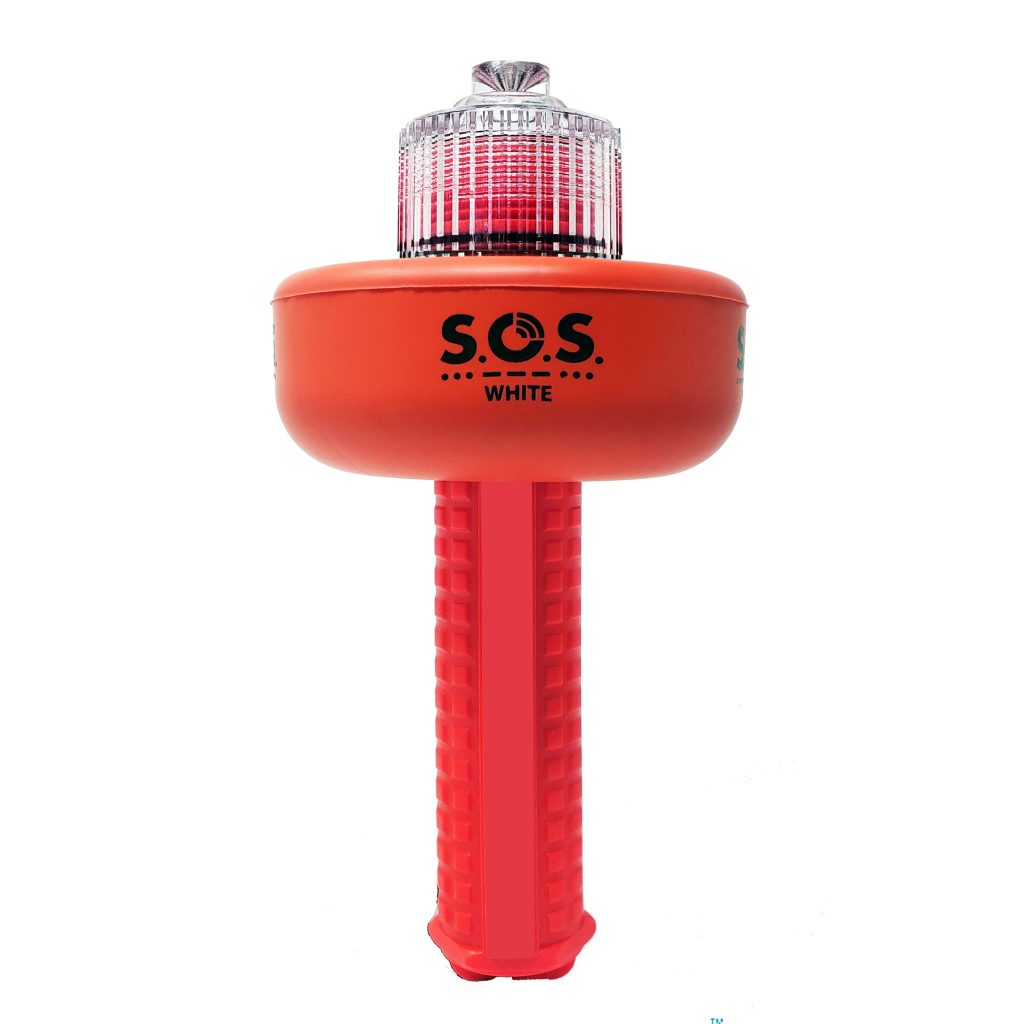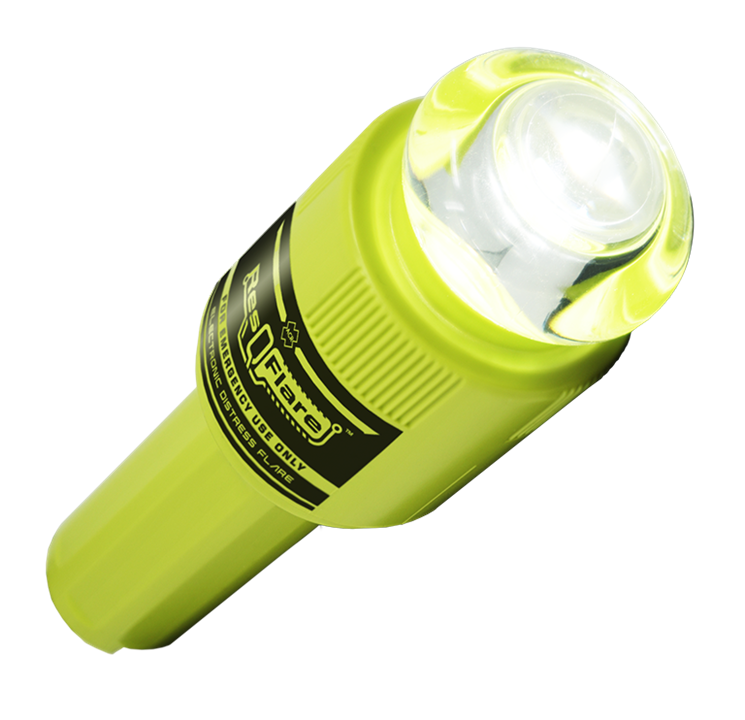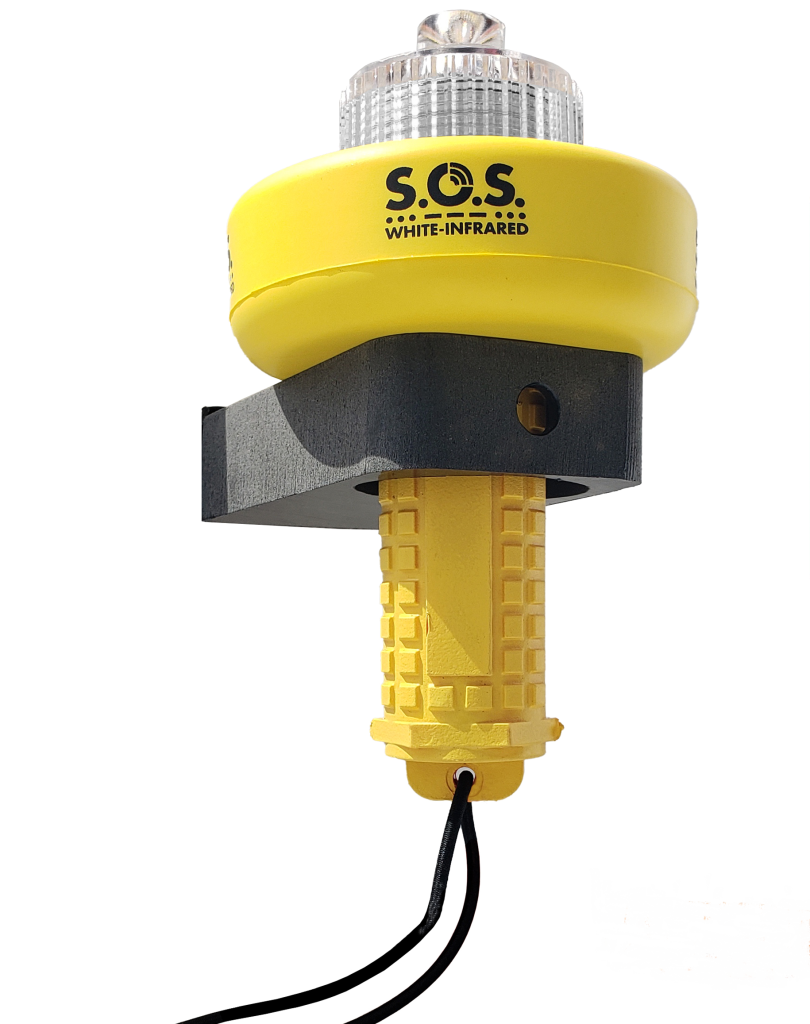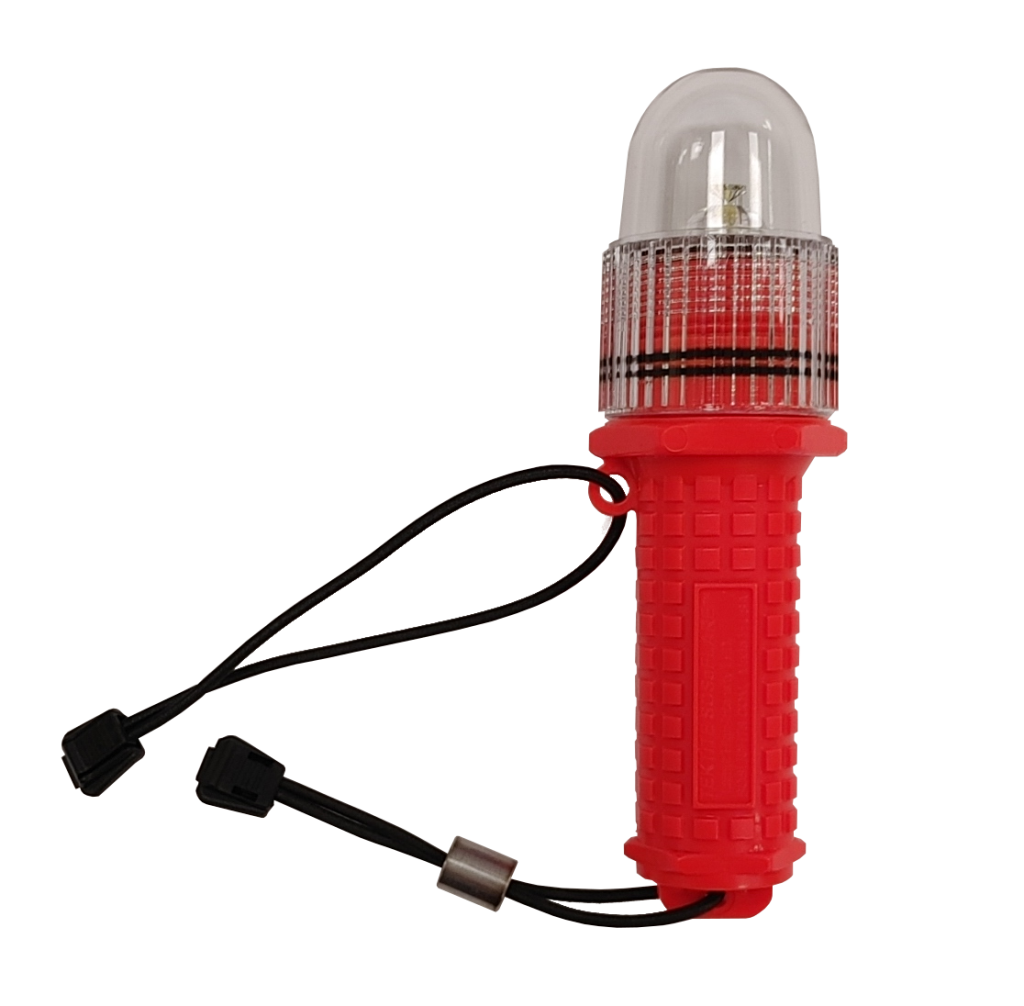An Electronic Visual Distress Signal (EVDS) is a signaling device that is handheld and non-toxic to the user. EVDS are used in the USA and those approved by the US Coast Guard under Title 46 161.03 must meet general performance requirements:
(1) Emit a white light that meets certain intensity requirements;
(2) Be capable of automatic signaling S-O-S for at least 3-5 times per minute for 6 hours;
(3) Contain an independent power source – batteries
(4) Float in freshwater with the lens surface at or above the surface of the water;
(5) Be equipped with a waterproof switch; and
(6) Float for at least 72 hours followed by submersion in 5% by weight sodium chloride solution for at least 2 hours
An EVDS is not a torch.
Products approved by MAST for use on recreational vessels will meet the above requirements.
EVDS are not compulsory, but rather an option to replace the 4 x handheld flares currently required in sheltered waters and offshore. If boat owners elect to carry these devices in sheltered waters, then the legislation also requires them carry a GPS-enabled EPIRB registered with AMSA and a VHF radio. Both of these must be in an operable condition. In coastal waters, the EVDS can be carried in lieu of the 4 x handheld flares and parachute flares must still be carried.
In sheltered waters, MAST considers that an EVDS, EPIRB and VHF radio will give people in distress a better chance of rescue as opposed to relying just on 4-hand flares as is currently required. The EPIRB and VHF give you an opportunity to get the message out that you are in distress. With pyrotechnic flares you are relying on someone seeing you, remembering they only last for a minute. In addition, before you leave the land you can check if your EVDS is working by simply turning it on. You cannot test a flare!
Products Approved by MAST for use on Recreational Vessels






Tektite SOSeFlare – IR LED, and thermal signature, for extra visibility for search aircraft with night vision equipment

Daniamant ODEO SOS electronic Flare – White SOS Light

Ocean Signal EDF2